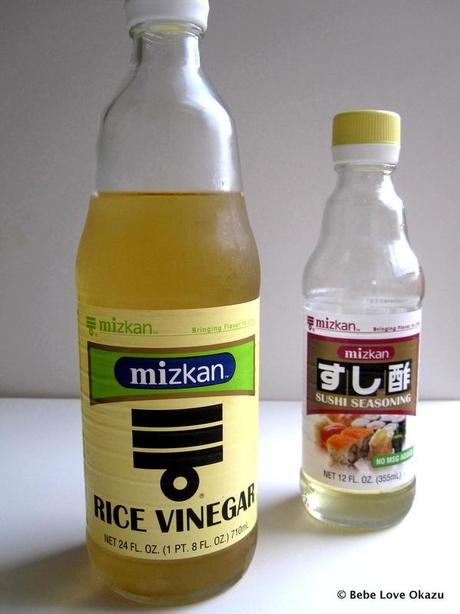
Today’s blog post was meant strictly as an ingredient spotlight about Japanese rice vinegar, short, sweet and professional, yet I’m compelled to admit that I almost burned down our kitchen yesterday. It was that kind of Monday for me. Please feel free to skip down to the vinegar article, if you like.
From the moment I woke-up, I was feeling off, not fully rested, and still feeling like I hadn’t shaken off the weekend nor our adventures in Los Angeles during the latter part of the week. With my head-not-on-straight, I started our usual Monday routine, breakfast, playing whatever Bebe wanted to play for awhile, and then moving on to Japanese school homework. I know, as a preschooler she seems too young to have homework, right? Despite my (dis)beliefs about homework at this age, we try to do it all on Monday so that we don’t have to think about it for the remainder of the week. Then Bebe went off to play on her own for a bit while I started lunch.
Big mistake.
We probably should have gone out for lunch.
Instead, I chose to make Bebe a simple but well-loved grilled cheese sandwich and that’s when the fire happened. I won’t tell you the embarrassing details about it, but let’s just say I have to replace a well-loved kitchen item and fortunately no one was hurt and the only thing damaged was that one item. I’ve never seen plastic drip and ooze like water… but I digress.
There were flames.
I was pretty frazzled. While I was talking to myself and saying, “uh oh, oh no, oh no”, Bebe asked, “what’s the matter mommy?” and started coming over to the kitchen and all I could say was, “everything is fine, don’t come over here, don’t come over here!”
Seriously though, I was a bit panicked while I was having another one of my classic Judy moments. I really need to have less of these moments…
My husband was relieved that it was a minor incident, and was quick to make a joke about my guzzling a glass of water at dinner… something about pyros and beverage of choice. Sigh. He made me laugh but seriously, I was very frazzled. It wasn’t funny.
Unfortunately, my fire has absolutely nothing to do with Japanese rice vinegar, but such is the beauty of my blog, and why my blog loves me, or perhaps it’s vice versa and I love my blog. So, this is how my week started. I hope yours started off better than my own… and didn’t involve any flames.
* * * * * * * *
Japanese Rice Vinegar
My second ingredient spotlight article on About.com is on Japanese rice vinegar. There are a few pantry staples (which I will get to in another post) in Japanese cooking, and rice vinegar is one of them. In case you missed it, my first ingredient spotlight on soy sauce is available here.
Typically, Japanese rice vinegar is made from fermented rice or fermented rice wine. It is made through a fermentation process where sugars, or carbohydrates, are converted into acetic acid. Acetic acid is the essence of vinegar’s distinct flavor, color and aroma.
Japanese rice vinegar is mild and sweet, however, when compared to white vinegar, and it is also quite versatile as an ingredient.
There are many types of vinegar available in cooking, but the two most important in Japanese cooking are:
1. Rice Vinegar
Rice vinegar, in Japanese is called “su” or sometimes it is referred to as “komezu”. The kanji character for su is: 酢. When a product is labeled rice vinegar, it often refers to pure rice vinegar, strictly made from fermented rice and water. Pure rice vinegar works well for dishes such as pickles (tsukemono), simmered dishes (nimono), or sunomono (daikon sunomono or kyuri sunomono).
2. Seasoned Rice Vinegar
Seasoned rice vinegar, in Japanese is called “sushi zu” or “awase zu”. The Japanese character for sushi zu is: すし酢. Seasoned rice vinegar is a mixture of fermented rice, water, sugar and salt. As it’s name “sushi zu” implies, the primary use for seasoned rice vinegar is sushi. Other dishes in which it is used include salad dressing, tsukemono, and dipping sauces. It may also be substituted for rice vinegar.
My full article on Japanese rice vinegar is available on my blog on About.com here.

